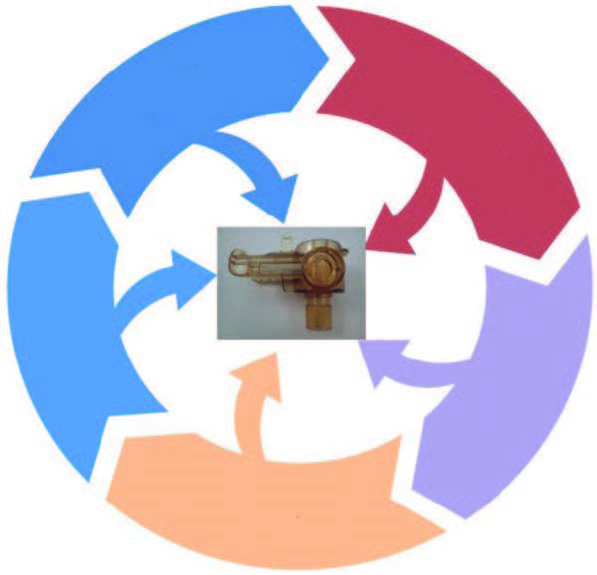This chapter originally appeared in ASM Handbook, Volume 11B, in 2023.
Choosing a specific material for a project can be a complex, daunting, and intimidating process when one is faced with endless material options. Although the material selection process is unique for each product, the goals are common to all. This article is framed around this definition:
Material selection involves the process of choosing one substance that meets performance and cosmetic goals over the lifetime of the product, that can be readily processed and assembled using commonly available techniques — all at an acceptable cost.
For the material selection process to be successful, it should be intimately involved during part design and in selecting the manufacturing process, processing conditions, and post assembly procedures, as well as during mold design. Of course, it is important to be aware that costs must be considered during every aspect of product development (Fig. 1).

Figure 1: The five facets of a successful product development
Material selection should be integral to the product development discussion from the very start. Too many failures are the result of forcing a material to a part and/or mold design for which it is not suited. Materials commonly are used to solve structural shortcomings or processing issues. The most successful parts result from leveraging the properties of the material together with its geometric features, all the while understanding how molding will influence the material properties and part shape.
There are numerous reasons why a plastic material should be considered for a product:
- Strength to weight ratio
- Strength to cost ratio
- Additives/reinforcements
- Design freedom
- Combining many components into one
- Cosmetic benefits
- Chemical resistance
- Thermal properties
- Assembly options
Many of these benefits come with important considerations. For example, plastics are excellent thermal insulators, but they can expand and contract 5 to 10 times more than metals over the same temperature change. Ignoring this property can result in a huge amount of stress or warpage and eventually failure of the part.
Every year, new materials are being introduced with an ever- increasing array of available properties. These enhanced properties permit plastic to be used in applications once considered beyond its capability. It was not too long ago that the idea of using a plastic material for a structural component in a bridge was unthinkable. However, the chemical resistance, weight reduction, and increase in lifetime that modern plastics can provide were too compelling to ignore. Plastic bridges that have projected lifetimes well past similar metal bridges are successfully being used throughout the world (Ref 1).
There are also many reasons why plastic materials should not be considered for an application. It is the responsibility of the design/materials engineer to recognize when the expected demands are outside of what the plastic can provide during the expected lifetime of the product. This article reviews the many considerations that are equally important to help ensure that part failure does not occur.
Although this article does not go into depth on the structure of polymeric materials, a quick review of thermoplastic and thermoset plastics is in order. Since the molecular structure and arrangement plays such an important role in how the material will process and function, the reader is encouraged to do a thorough investigation (Ref 2). Additionally, the article “Engineering Plastics: An Introduction” in this volume describes the various aspects of chemical structure and composition that are important to an understanding of polymer properties and their eventual effect on the end-use performance of engineering plastics, especially thermoplastics and thermosets.
